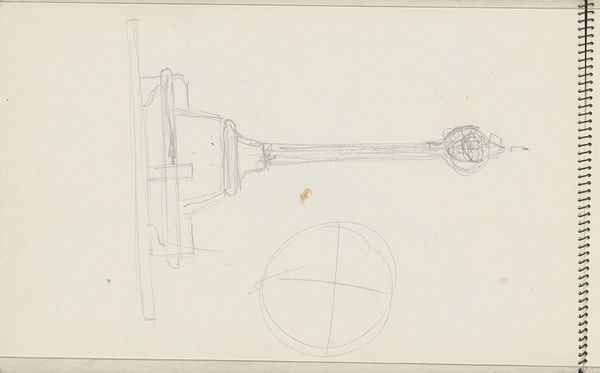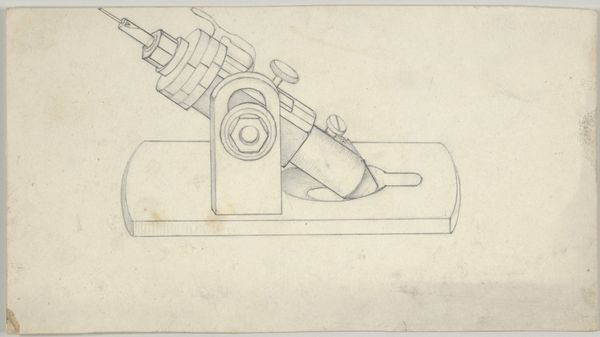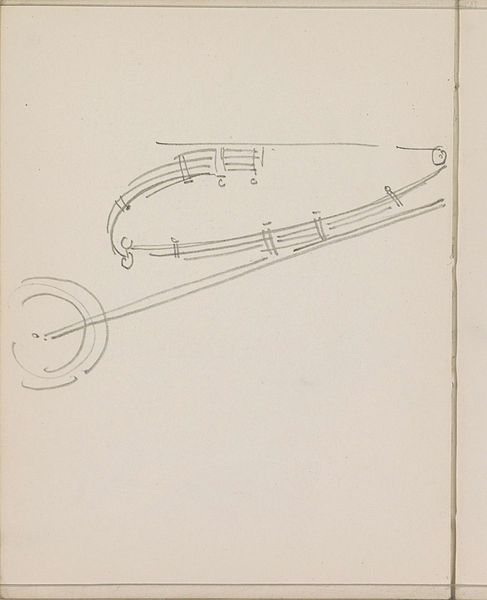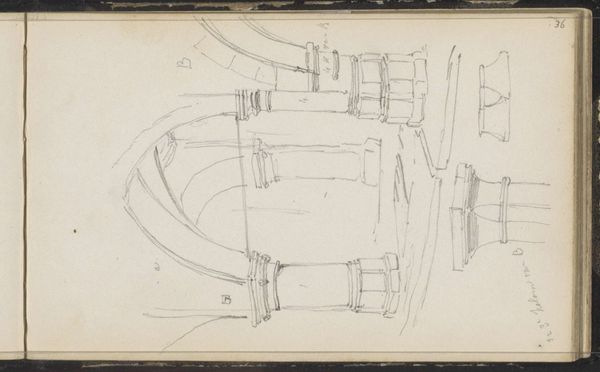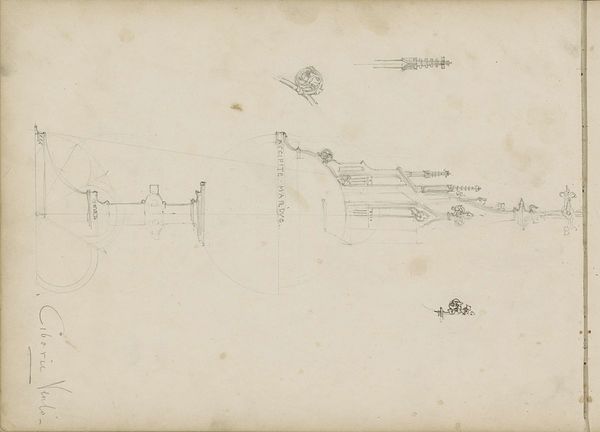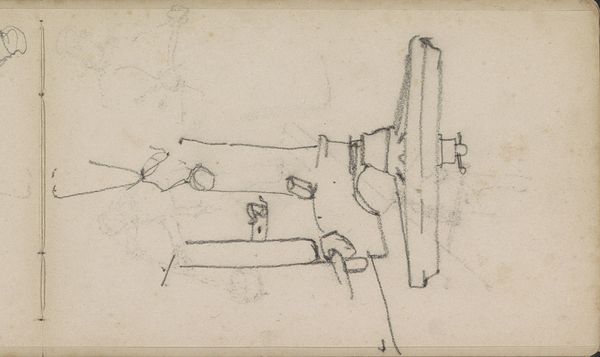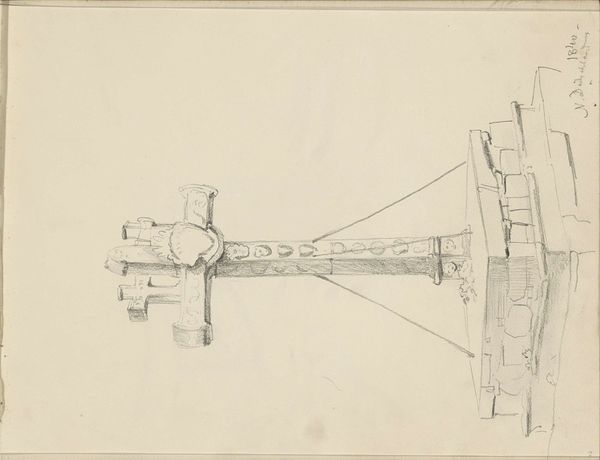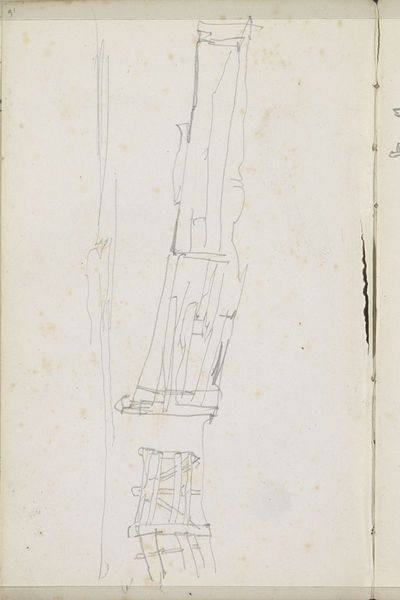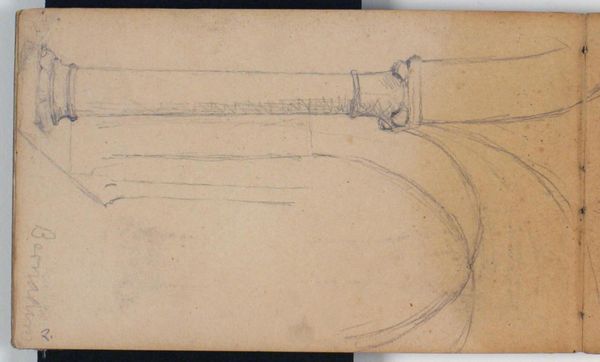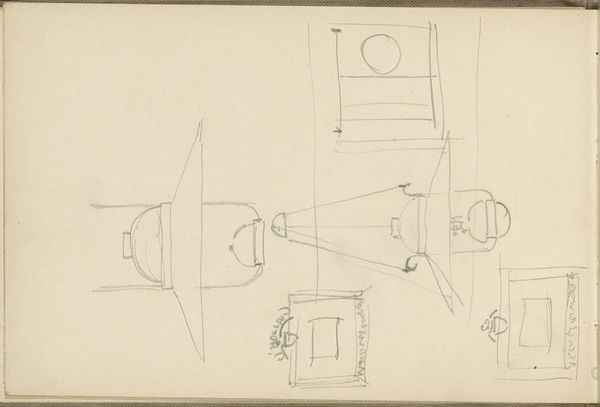
drawing, paper, pencil
drawing
art-nouveau
paper
geometric
pencil
abstraction
line
Copyright: Rijks Museum: Open Domain
Curator: This is "Architectuurdetails," a pencil drawing on paper, by Carel Adolph Lion Cachet, from around 1905-1910, housed at the Rijksmuseum. Editor: Right. At first glance, it feels like a technical drawing, something very precise but unfinished at the same time. I’m curious, what do you see when you look at it? Curator: I see a deliberate focus on the construction process, revealed through the raw materiality of pencil on paper. The visible pencil strokes aren't just representing a design; they're a record of labor, of the physical act of creating the image itself. Editor: So you’re saying the process is as important as the end result? Curator: Absolutely. Cachet isn’t just presenting a finished architectural detail. He’s showing us how that detail comes into being. It makes me think about the Art Nouveau movement and how they tried to reconcile the gap between industrial production and craft. The choice of pencil is significant—an accessible, reproducible material, yet wielded to create something seemingly unique. Editor: How does it fit in with the broader art world? Is Cachet making a statement by focusing on the mundane aspects of construction? Curator: He's questioning the separation of high art and craft. Instead of celebrating an idealized form, he presents the labor and material reality of creation. Consider the social context: early 20th century, increasing industrialization. Artists are grappling with how art can maintain relevance in a rapidly changing world. What about the lines? Do you think their nature has anything to say? Editor: Now that you mention it, they're not very rigid or refined lines. It is like looking at the bones, and ignoring what they're holding up. Curator: Exactly! The looseness subverts any notion of pristine perfection. It embraces imperfection, highlighting the handmade quality in a time of increasing mechanization. Hopefully, that gives us more insight. Editor: This was very helpful. It is cool to think about it more in terms of materials, processes, and labour and less on what it represents.
Comments
No comments
Be the first to comment and join the conversation on the ultimate creative platform.
